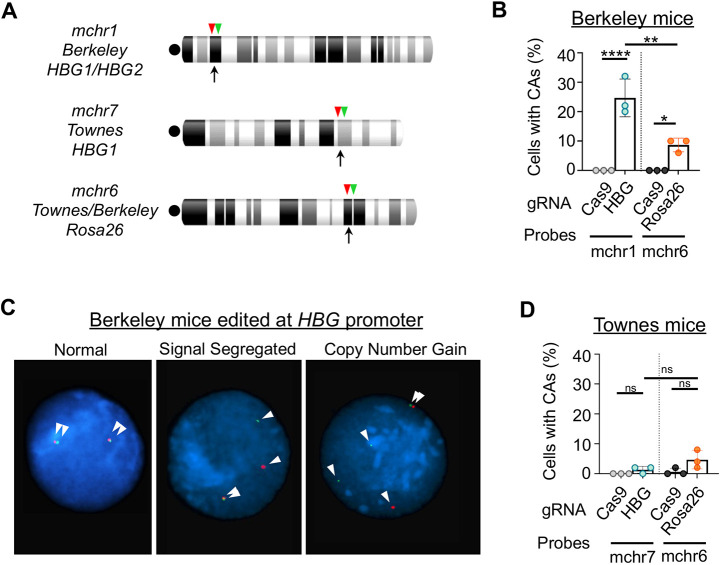Fig. 4.
Chromosome instability after editing the human γ-globin transgenes in Berkeley mice. Bone marrow-derived Lin− HSPCs from Berkeley or Townes mice were edited and grown for 24 h as described in Fig. 3A, then analyzed for chromosomal aberrations using FISH. (A) Chromosome ideograms showing each editing site (black arrows) and flanking centromeric (red arrowheads) and telomeric (green arrowheads) FISH probes. Centromeres are indicated by black dots. (B) Percentages of Berkeley Lin− cells with chromosomal abnormalities (CAs) identified by abnormal FISH signal segregation after editing the γ-globin (HBG) promoters or Rosa26. (C) Representative FISH images of HBG1/HBG2-edited Berkeley HSPCs showing normal probe pairing, abnormal segregation of a telomeric segment or copy number gain. White arrowheads indicate probe signals. (D) Frequency of CAs after editing HBG1 or Rosa26 in Townes Lin− HSPCs. Graphs show mean±s.e.m. of three biological replicate experiments, 50 interphase cells analyzed per sample. ns, not significant; *P<0.05, **P<0.01, ****P<0.0001, by one-way ANOVA.

